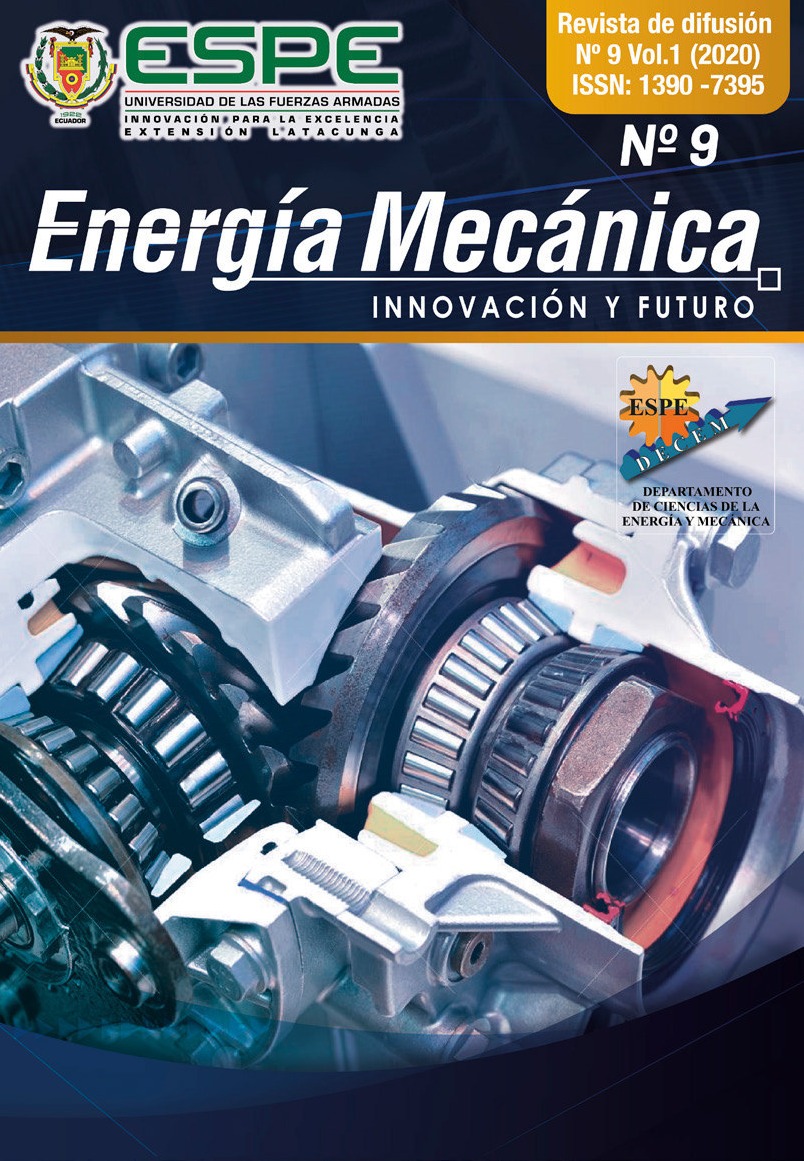MANTENIMIENTO CONTROLADO DE BATERÍAS DE ALTA GAMA UTILIZADAS EN SISTEMAS DE PROPULSIÓN ELÉCTRICA
DOI:
https://doi.org/10.24133/EMIF.V9.5i.3882Resumen
La investigación tiene como objetivo principal el diseño de un sistema de gestión de baterías de alta gama en propulsión eléctrica a partir del control y monitoreo en tiempo real de parámetros en el sistema de carga y descarga. Se enfoca en la investigación de la variación de valores de voltaje y corriente con respecto a la capacidad nominal de una batería, de acuerdo los procesos de carga, descarga, mantenimiento o diagnóstico de la batería. Se presenta la determinación del estado de salud SoH, con el n de brindar un diagnóstico del estado de vida de las baterías, para ello se ahonda en cálculos y ecuaciones basadas en la corriente, temperatura y tiempo. Se utiliza el método de conteo de coulomb para la extracción de datos reales del estado de la batería. Palabras Clave: Sistema de Gestión de Baterías, Estado de Carga, Estado de Salud, Fases de carga. The main objective of the research is the design of a high-end battery management system in electric propulsion based on the control and monitoring in real time of parameters in the charging and discharging system. It focuses on the investigation of the variation of voltage and current values with respect to the nominal capacity of a battery, according to the battery’s charging, discharging, maintenance or diagnostic processes. The determination of the state of health SoH is presented, in order to provide a diagnosis of the state of life of the batteries, for this it delves into calculations and equations based on current, temperature and time. The coulomb counting method is used for extracting actual data from the battery condition. Keywords: Battery Management System, State of Charge, State of Health, Charging phases. Referencias [1] S. Lacroix, E. Laboure y M. Hilairet, «An Integrated Fast Battery Charger for Electric Vehicle,» IEEE Vehicle Power and Propulsion Conference, nº 1, pp. 1-6, 2014. [2] R. Xiong, W. Sun, Q. Yu y F. Sun, «Research progress, challenges and prospects of fault diagnosis on battery system of electric vehicles,» Applied Energy, nº 279, 2020. [3] J. Bergveld, W. Kruijt y P. Notten, Battery Managment Systems, Eindhoven: SPRINGER- SCIENCE+BUSINESS MEDIA, B.V., 2002. [4] B. Buchli, D. Aschwanden y B. J., «Battery State- of-Charge Approximation for Energy Harvesting Embedded Systems,» Lecture Notes in Computer Science, nº 7772, 2013. [5] J. Larminie y J. Lowry, ELECTRIC VEHICLE TECHNOLOGY EXPLAINED, vol. Segunda Edición, Hoboken: John Wiley & Sons Ltd., 2012, pp. 19-77. [6] MASTERVOLT, Power Book, Damen Drukkers Werkendam, 2020. [7] Rolls Battery Engineering, Battery user Manual, Rolls Battery Engineering, 2019. [8] I. Buchmann, «Battery University,» 2020. [En línea]. Available: https://batteryuniversity.com/ learn/article/charging_lithium_ion_batteries. [Último acceso: 11 Diciembre 2020]. [9] Chargetek , «Battery charger basics,» 2015. [En línea]. Available: https://chargetek.com/basic- information.html. [Último acceso: 11 Diciembre 2020]. [10] I. Buchmann, «Battery University,» 2020. [En línea]. Available: https://batteryuniversity.com/ learn/article/discharge_methods. [Último acceso: 11 Diciembre 2020]. [11] J. Campillo, C. G., D. Chen, E. Dahlquist, D. Dallinger, D. Danilov, N. Ghaviha, R. Khors, S. Kouro, R. Madlener, V. Marano, S. Marwitz, M. Mierau, P. Notten, C. Ozansoy, V. Krishna, S. Rivera, A. Shaei, T. Selim y N. Zimmerman, Technologies and Applications for Smart Charging of Electric and Plug-in Hybrid Vehicles, Suiza: Springer International Publishing Switzerland, 2017. [12] K. Ng, C. Moo, Y. Chen y Y. Hsieh, «Enhanced coulomb counting method for estimating state- of-charge and state-of-health of lithium-ion batteries,» Applied energy, vol. 86, nº 9, pp. 1506-1511, 2009. [13] Institute of Electric and Electronic Engineers, «IEEE Recommended Practice for Maintenance, Testing, and Replacement of Valve-Regulated Lead-Acid (VRLA) Batteries for Stationary Applications - Amendment 1: Updated VRLA Maintenance Considerations,» IEEE, pp. 1-44, 2014. [14] I. Kim, «A Technique for Estimating the State of Health of Lithium Batteries Through a Dual- Sliding-Mode Observer,» IEEE transactions on Power Electronics, vol. 25, nº 4, pp. 1013-1022, 2019.Publicado
Número
Sección
Licencia
Los autores que publican en esta revista están de acuerdo con los siguientes términos:
Los autores conservan los derechos de autor y garantizan a la revista el derecho de ser la primera publicación del trabajo al igual que licenciado bajo una Creative Commons Attribution License que permite a otros compartir el trabajo con un reconocimiento de la autoría del trabajo y la publicación inicial en esta revista.
Los autores pueden establecer por separado acuerdos adicionales para la distribución no exclusiva de la versión de la obra publicada en la revista (por ejemplo, situarlo en un repositorio institucional o publicarlo en un libro), con un reconocimiento de su publicación inicial en esta revista.
Se permite y se anima a los autores a difundir sus trabajos electrónicamente (por ejemplo, en repositorios institucionales o en su propio sitio web) antes y durante el proceso de envío, ya que puede dar lugar a intercambios productivos, así como a una citación más temprana y mayor de los trabajos publicados.

